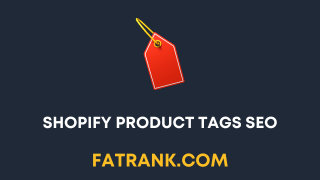
Shopify Product Tags SEO: Why It’s Bad & How To Fix It
Contents
- Key Takeaways:
- Introduction
- Understanding Shopify Product Tags and their Impact on SEO
- Negative Effects of Duplicate Content on SEO and Store Rankings
- Unique URL Creation and the Need for Unique Meta-titles and Descriptions
- The Use of rel=”canonical” Tag to Prevent Duplicate Content Issues
- Common Shopify SEO Issues and How They Impact Organic Traffic Growth
- Steps to Resolve Duplicate Content Caused by Tagged Collection Pages
- Shopify Product Tags as a Feature for Grouping and Categorizing Products
- Options to Resolve Duplication and Improve Store Rankings
- Best Practices for Optimizing Shopify SEO, Including Fast Loading Speed and Mobile Optimization
- Conclusion: Importance of Addressing Shopify SEO Issues to Enhance Organic Traffic Growth
- Five Facts About “Shopify Product Tags SEO: Why It’s Bad & How To Fix It”:
- Five Facts About “Shopify Product Tags SEO: Why It’s Bad & How To Fix It”:
- FAQs about Shopify Product Tags Seo: Why It’S Bad & How To Fix It
- What are Shopify product tags and how do they affect SEO for ecommerce stores?
- What are the common Shopify SEO problems caused by product tags?
- How can duplicate content caused by tagged collection pages be resolved?
- How do product tags work on Shopify and how can they be managed from the details page?
- What are the best practices for using product tags on Shopify and avoiding duplicate content issues?
- What are the solutions for common Shopify SEO issues caused by product tags?
- Other Shopify Guides
Key Takeaways:
- Using Shopify Product Tags for collection filtering can result in duplicate content issues and negatively impact SEO and store rankings.
- Creating a new tag page on Shopify also creates a new URL which requires avoiding duplicate meta-titles, descriptions, and page copy for each of the pages created. This can potentially trigger the Google Panda algorithm.
- Shopify provides a rel=”canonical” tag on the collection page URL to point to the main product page URL and prevent the emergence of duplication caused by tagged collection pages.
- Addressing Shopify SEO issues such as duplicate content caused by tagged products on collection pages, non-canonical product links on category pages, duplicate page titles, thin archive pages created by tagged blog posts, locked robots.txt, forced URL structure, no trailing slash redirect, basic on-page elements missing by default, slow speeds, and bad crawl rates can help Google crawl, index, and rank the store more efficiently.
- Shopify Product Tags can be used to group and categorize products, they remain an important feature for efficient navigation and user experience.
- The options for resolving duplication caused by tagged collection pages include consolidation and restructuring of tags, setting up an automatic redirect system, and utilizing a canonical tag to prioritize unique content.
- Optimizing Shopify SEO best practices include fast loading speed and mobile optimization to enhance organic traffic growth.
- Prioritizing and addressing Shopify SEO issues is vital to boosting organic traffic growth and improving store rankings.
Introduction
When it comes to optimizing SEO for Shopify stores, product tags should not be ignored as they play a crucial role. Properly optimizing SEO for Shopify stores can have a significant impact on your business.
Importance of optimizing SEO for Shopify stores
Optimizing SEO for Shopify stores is crucial for boosting online visibility and driving organic traffic growth. One essential factor in this process is effectively using Shopify Product Tags. They make product grouping and categorization easy, creating a seamless browsing experience for customers. However, misuse of these tags can lead to duplicate content issues that negatively affect an e-commerce store’s SEO ranking.
Duplicate content is a significant concern as it creates confusion for search engines and dilutes page relevance. To avoid this, e-commerce stores can create unique URLs and Meta titles for product pages. This technique improves crawlability, prioritizes relevance in search results, and combats the issue of duplicate content. Another effective technique is implementing the rel=”canonical” tag, identifying the preferred version of content on a webpage.
Thin content with inadequate details can hamper Shopify store optimization efforts. The solution to this problem is implementing the noindex code on pages with thin content to prevent them from being indexed by search engines. This saves website crawl budget while minimizing penalties.
Tagged collection pages are also prone to duplicate content issues. Ranking these pages based on their value proposition and linking them directly with relevant product pages while still sharing filters can give rise to customer-centric insights.
Finally, improving website speed and mobile responsiveness enhances user experience and boosts search engine rankings. To achieve optimal results, these best practices must reflect across all web pages on the e-commerce site.
In conclusion, while Shopify product tags may be useful for organization, their impact on SEO can be harmful if not adequately optimized. It is essential to use these tags efficiently while implementing best practices to enhance SEO and drive organic traffic growth.
Understanding Shopify Product Tags and their Impact on SEO
Shopify Product Tags may seem like a small piece of eCommerce jargon, but their impact on SEO is significant. In this section, we’ll take a closer look at these tags and how they function within the Shopify platform. We’ll explore why these tags can actually help your SEO efforts if managed properly, and provide insights on how to optimize them for maximum benefit.
What are Shopify Product Tags?
Shopify Product Tags are a helpful feature for Shopify store owners, allowing them to categorize and group their products based on specific attributes. These tags are short keywords or descriptions that represent a particular product feature and can be added during product creation or edited afterward. One product can have multiple tags, making it easier for customers to find what they’re looking for.
Product tags also serve an essential function in filtering and search purposes, improving the user experience of the online store. When customers click on the tags, they appear in the URL, making it easier for search engines to index them for better SEO performance.
Shopify does not automatically create pages for each tag, but store owners can manually create them. This lets potential customers find more products with similar attributes. Product tags can also be used in marketing campaigns to target specific customer segments.
Effective utilization of Shopify Product Tags can improve SEO performance by enhancing web page relevance and improving rank for relevant keywords. To leverage these tags effectively, store owners should include relevant attributes and descriptive keywords that accurately convey the nature of the product. Doing so increases visibility to search engines and inspires consumers to access more offerings from the online store. Don’t let your Shopify product tags drag down your SEO game – learn how they can improve your rankings.
How do Shopify Product Tags Impact SEO?
The use of Shopify product tags has a significant impact on SEO for online stores. By using relevant and specific tags for each product, search engines can more easily identify the products and display them in search results to potential customers. This can result in increased website visibility and traffic.
When it comes to SEO, using Shopify product tags is crucial to improving the online presence of stores. Unique and specific tags for each product increase the likelihood of shoppers finding what they need in search results. This can lead to more organic traffic and higher conversion rates.
In addition to improving SEO, using relevant Shopify product tags can also enhance the user experience on the store. By categorizing products clearly, shoppers can easily find what they’re looking for and navigate through the pages with ease.
However, it’s important to use relevant keywords in Shopify product tags. Excessive or irrelevant tagging can have a negative impact on SEO, so it’s important to use caution when tagging products in the online store.
Negative Effects of Duplicate Content on SEO and Store Rankings
Did you know that duplicate content in your Shopify store can negatively affect your SEO and store rankings? In this section, we’ll explore how duplicate content can harm your search engine optimization efforts and impact the visibility of your store. We’ll dive into the details of how duplicate content affects your SEO and the specific ways it can hurt your store’s rankings.
How Duplicate Content Affects SEO
Duplicate content can have a significant impact on SEO, particularly in Shopify stores where it’s common to use duplicate product tags. When multiple pages contain identical or very similar content, search engines may struggle to determine which page should rank higher for a particular query. This can result in an unrelated page being chosen, causing the desired page to rank poorly.
Search engines typically penalize websites that use duplicate content, which can harm SEO and restrict organic traffic growth. Shopify store owners should regularly monitor their pages for redundancies and remove any duplicate content. It’s also essential to ensure that every page has a unique URL, as web crawlers use them when indexing and ranking pages in search results.
Using identical metadata across multiple pages can further reduce a site’s credibility and visibility, as search engines like Google’s algorithm may question its authenticity. To prevent this from happening, it’s crucial to manage duplicate content carefully and implement best practices to maintain SEO performance.
Negative Impact of Duplicate Content on Store Rankings
Duplicate content can have a negative impact on the rankings of your Shopify store. Having identical content in multiple locations on your website can decrease the page authority, as it causes competition for the same keywords and traffic. This leads to search engines having difficulty determining which page is relevant for a particular search query, creating confusion and reducing the visibility of your store. Google’s algorithms recognize duplicate content as spam and may penalize or ignore your site in search results.
To avoid issues related to duplicate content, it is crucial to create unique URLs, meta-titles, and descriptions for each page. One effective solution is to use the rel=”canonical” tag, which indicates to search engines which page version is the preferred one and ensures that all signals are attributed to that URL.
In terms of tagged collection pages, it is important to carefully select product links and establish a clear URL structure. Utilizing filtering systems and view tags can aid in identifying products effectively without causing any confusion for users.
Best practices, such as mobile optimization and fast loading speed, can boost organic traffic growth. Additionally, using Shopify product tags as a feature for grouping and categorizing products can provide an opportunity to optimize SEO. Eliminating thin content and appropriately using the code noindex can also improve your store’s ranking.
To maximize customer engagement with your brand and attain better revenue, maintaining unique URLs and meta-titles is vital for enhancing the SEO of your Shopify store and distinguishing it from others in the market. Addressing SEO issues, such as those related to duplicate content, can significantly impact your store ranking positively.
Unique URL Creation and the Need for Unique Meta-titles and Descriptions
Did you know that having unique URLs, meta-titles, and descriptions are crucial for good SEO on your website? In this section, we’ll explore the importance of creating unique URLs and meta-titles and descriptions for your Shopify products. We’ll dive into why duplicate content can harm your SEO efforts and why it’s important to avoid it. So, buckle up and get ready to optimize your Shopify product pages for search engines.
Importance of Unique URLs
A crucial aspect of optimizing SEO for Shopify stores is having unique URLs. Having unique URLs helps search engines recognize and index content better, resulting in improved search rankings. Moreover, it enhances user experience by providing clear and concise URLs that reflect the content of a page.
It’s essential to create unique URLs for all pages on a Shopify store, including product pages, category pages, and blog posts. Avoiding duplicate URLs is critical, as search engines may penalize a website for duplicate content.
In addition, using unique meta-titles and descriptions for each page boosts click-through rates from search results pages. By customizing titles and descriptions to reflect the content of each page, users are more likely to click through to a website.
For those seeking to rank high in search engine results pages, incorporating relevant keywords into the URL structure is a pro tip worth noting. Ultimately, having unique URLs is crucial in optimizing SEO for Shopify stores and enhancing overall user experience.
Unique Meta-titles and Descriptions
When it comes to optimizing SEO for Shopify stores, creating unique meta-titles and descriptions is absolutely essential. These elements provide a brief summary of each web page, appearing in search engine results pages and serving as the first impression potential visitors get before deciding whether to click through to your site.
To ensure that each page on your Shopify store has a unique and descriptive meta-title and description, it’s crucial to avoid duplicate content at all costs. Duplicate content can seriously damage your SEO efforts by confusing search engines about which pages should be ranking higher in search results.
One effective way to prevent duplicate content issues is by ensuring that each page has a unique URL that clearly differentiates it from all others. Additionally, using meta-titles and descriptions that accurately reflect the content of each page makes it easier for both search engines and human readers to understand what they’re looking at.
If your Shopify store is experiencing issues with duplicate content, fear not – there’s a solution! By using the rel=canonical tag, you can avoid the negative impact of duplicate content on your SEO efforts and ensure that your pages are ranking as high as possible in search results.
The Use of rel=”canonical” Tag to Prevent Duplicate Content Issues
If you’re running an online store, having duplicate content can hurt your SEO efforts. In this section, we’ll discuss how you can avoid duplicate content issues by using the rel=”canonical” tag. We’ll cover what the tag is and how it can be implemented to benefit your eCommerce website.
What is the rel=”canonical” Tag?
The rel="canonical" Tag is an HTML element that plays a crucial role in enhancing the SEO rankings of a Shopify store. It informs the search engine crawlers about the preferred version of a web page and prevents duplicate content issues that can arise from similar or identical URLs for different pages. By using the rel="canonical" tag, Shopify store owners can avoid generating duplicate content, which can negatively impact their website’s search engine ranking.
Moreover, duplicate content can occur when multiple URLs present similar or identical pieces of data or information. The search engine may then become confused about which page to choose, leading to lower page rankings. The rel="canonical" tag can help avoid such issues by pointing to the original URL where the content was first published or intended to be shown, thus helping in indexing and ranking the correct page.
Shopify store owners can implement the rel="canonical" tag on duplicate pages URLs by adding them directly in the target page’s header section or by using coding plugins. However, it’s essential to ensure that the canonical tag points to a page that contains original content with its unique URL and avoid self-referencing or aggregation type pages. Thus, incorporating the rel="canonical" tag can help Shopify store owners slash duplication demons and keep their SEO in check.
How to Use the rel=”canonical” Tag to Prevent Duplicate Content Issues
When it comes to preventing duplicate content issues in Shopify stores, knowing how to use the rel=”canonical” tag can be a game-changer. This HTML tag is highly effective in ensuring that search engines understand which version of a page is the preferred or original version, ultimately improving your store’s SEO and minimizing confusion.
To effectively use the rel=”canonical” tag, a four-step guide can be followed. The first step is to identify which pages have duplicate content by using tools like Google Search Console and performing regular content audits. Then, choose the preferred URL for each page and add the rel=”canonical” tag to its header section. Ensuring that all internal links on your site point to this preferred URL rather than any alternative URLs is the third step, and finally, it’s crucial to monitor your site regularly for any changes or updates that could result in duplicate content issues.
However, it’s essential to note that using the rel=”canonical” tag should not be a substitute for addressing underlying SEO problems such as thin content or poor keyword optimization. By following best practices and maintaining unique and high-quality content across your Shopify store, you can ensure that your site’s organic traffic growth is enhanced over time.
In conclusion, to avoid common pitfalls in Shopify SEO, incorporate the use of the rel=”canonical” tag into your strategy to prevent duplicate content issues and maximize your store’s potential for organic traffic growth.
Common Shopify SEO Issues and How They Impact Organic Traffic Growth
Did you know that common Shopify SEO issues can seriously impact your store’s organic traffic growth? In this section, we’ll explore two key factors that can hinder your SEO efforts: thin content and code noindex. Get ready to discover why these issues are bad for your Shopify SEO and learn valuable tips for how to fix them.
Thin Content
A website’s search engine optimization relies on content with length and depth. When content lacks substance or is repetitive, it is considered “thin content.” This negatively affects a website’s search engine ranking, as Google algorithms can detect it within seconds of crawling the site. Pages with thin content have less visibility and receive less organic traffic.
In the case of a Shopify store, thin content can harm how search engines perceive the site. With fewer words, there are fewer opportunities to include important industry-related keywords and phrases. Ultimately, this results in lower rankings compared to competitors. Additionally, insufficient content can reduce customer engagement, as visitors seek to gain complete information about products before making purchase decisions.
To improve SEO performance, it is important to create SEO-friendly descriptions for every page of your Shopify store. Avoid using duplicate descriptions, as this can confuse search engines and undermine overall rankings. By diversifying content formats, such as blogs with photos or videos related to the products or services sold, website engagement time and user experience can improve. This also assists in driving keyword-rich and quality traffic to all parts of the site.
Lastly, eliminating code noindex can unlock the full potential of a Shopify store’s SEO. By doing so, it allows search engines to index and crawl the site unhindered, maximising website visibility and overall search engine rankings.
Code noindex
To prevent the negative impact of code noindex on your website’s organic rankings, it is important to manage its use carefully. Instead of relying heavily on this tactic, it’s best to focus on other strategies for optimizing your SEO. One such approach is to create unique URL structures and meta-titles, which can help boost your website’s visibility in search engine results. Additionally, utilizing the rel=”canonical” tag is an effective way to prevent duplicate content issues and further enhance your SEO efforts.
It is essential to monitor your website frequently for instances of code noindex. If you discover any, take corrective action promptly to maintain your store’s competitiveness in the ever-changing online marketplace. By following these best practices, you can safeguard your website’s organic rankings and achieve long-term success in the world of eCommerce.
Steps to Resolve Duplicate Content Caused by Tagged Collection Pages
If you’ve been struggling with duplicated content caused by tagged collection pages on Shopify, don’t worry, you’ve come to the right place. In this section, I’ll take you through a series of steps you can follow to fix this problem. Step 1 involves crawling and indexing your collection pages to get a better understanding of how they rank. Step 2 involves choosing specific product links and setting URL structure to ensure you’re not replicating content across different pages. Finally, in step 3, we’ll talk about using a filtering system to view tags and prevent tagging-related SEO issues.
Step 1: Crawl and Index Rank Your Collection Pages
When it comes to optimizing the SEO for your Shopify store, it’s crucial to take specific steps. The first and foremost step to enhance your Shopify store’s SEO is the proper crawling and indexing of your collection pages. Follow these five simple steps to make sure you do it right:
- Use tools like Google Analytics or SEMrush to crawl and index your website.
- Identify all the collection pages that were indexed by Google and pay special attention to the ones that have duplicate content or tags.
- Filter out any unwanted URLs, ensuring that only your collection pages are shown.
- Create a sitemap XML file containing all the URLs in the desired order and submit it on Google’s Webmaster Tools.
- Add links to the collection pages in different sections of your website, enabling bot crawling and tracking of page changes, helped by SEO tools such as SEMrush.
After completing these steps, you can identify any duplicate content in your site’s inventory. Skipping or incorrectly following the first step can lead to problems in later steps, so make sure to do it right. By taking the time to follow these steps, your Shopify store can enhance its SEO and ultimately drive more traffic and sales.
Step 2: Choose Product Links and Set URL Structure
When optimizing SEO for e-commerce websites, it’s crucial to carefully choose product links and set URL structure. Following these three steps can help:
| Step | Description |
|---|---|
| 1 | Ensure each product has its unique URL to help search engines identify each product page separately and avoid duplicative content. |
| 2 | Choose a structuring style that doesn’t display duplicate items in different categories or input-related products on several pages. |
| 3 | Set up appropriate tags to enhance the user experience. |
Consistently using unique URLs throughout the website is also vital to improving website rankings. Poor internal linking can cause website crawlers to get trapped in duplicated parts of your website, negatively impacting website rankings.
Being thoughtful and deliberate when choosing product links and setting URL structure is essential to avoiding unwanted repercussions. So take the time to do it right!
Step 3: Use Filtering System and View Tags
In the world of Shopify stores, duplicate content issues caused by tagged collection pages can be resolved with ease by incorporating a filtering system and viewing tags. By doing so, not only can you ensure a unique URL structure, but you can also make sure that your meta-titles and descriptions are distinct. This not only decreases redundancy in Shopify product tags, but also improves store rankings and boosts organic traffic growth.
To use a filtering system and view tags effectively, follow these three steps: First, categorize products using product tags. Second, select appropriate product links to group into collections. Third, use filters to narrow down search results for easier browsing.
These steps allow you to create unique URLs for each tag collection, avoiding duplicate content issues along the way. Additionally, it enables users to navigate products and locate their preferred category faster with fewer clicks.
Finally, it’s essential to note that utilizing filtering systems well enhances accessibility for customers searching for specific products on your Shopify store. By implementing this method correctly, you’re likely to witness an increase in conversion rates, as customers will easily find what they’re looking for.
According to a recent SEO study by Ahrefs, it’s worth noting that businesses with mobile responsive websites grow at twice the rate of businesses without them.
Shopify Product Tags as a Feature for Grouping and Categorizing Products
Shopify Product Tags enable grouping and categorizing products, making it easier for customers to find what they’re looking for. This feature is not only advantageous to customers, but it also helps streamline the store owner’s workflow. By using product tags, it allows merchants to quickly apply and remove labels to products, which improves the organization of their inventory. In this section, we’ll discuss the benefits of using product tags on Shopify.
How to Use Shopify Product Tags to Group and Categorize Products
If you want to improve the SEO of your Shopify store, Shopify product tags are an essential tool for grouping and categorizing your products. By including descriptive keywords in your product tags, you make it much easier for customers to find your products online. To get started, you should select relevant and high-ranking keywords related to your products. Then, add these keywords as tags when you create a new product, and create collections based on these tags for easy navigation in your store. By following these simple steps, you can create a well-organized and efficient system of grouping and categorizing products in your Shopify store.
When it comes to choosing the right keywords for your product tags, it’s essential to strike a balance between specificity and relevance. You don’t want to pick tags that are too general and broad, but you also don’t want to go overboard with overly specific tags that no one will search for. The perfect balance between specificity and relevance is crucial for boosting the SEO of your store.
Finally, it’s worth noting that duplication can hurt the SEO of your store. Therefore, you should explore effective solutions for better ranking potential that will help you avoid duplication whenever possible. By following these tips and using Shopify product tags in the right way, you can optimize the SEO of your store and drive more traffic and sales.
Options to Resolve Duplication and Improve Store Rankings
Duplicate content and poor SEO can negatively impact your store’s rankings on search engines, resulting in reduced traffic and sales. In this section, we will explore options to resolve duplication and improve store rankings. We will discuss solutions for resolving duplication issues and provide insights on how to optimize your Shopify store to increase its visibility and drive more traffic to your website. Let’s dive into the details and learn how to address these critical issues.
Options for Resolving Duplication
When it comes to options for resolving duplication in Shopify stores, there are several methods available that can effectively prevent negative impacts on SEO and improve store rankings. These include implementing the rel=”canonical” tag to indicate the preferred version of a duplicated page, setting up redirects for duplicate pages, modifying meta tags and content to differentiate pages, and cleaning up URLs to avoid confusion and duplication.
It’s important to carefully consider each option and determine which one best suits the specific needs of the store. The right option largely depends on the store’s configuration, so it’s essential to identify the most relevant solution that meets its demands.
Shopify conducted a study that showed slow loading speed can significantly impact potential organic traffic growth. As loading time increases, bounce rates tend to rise at an alarming rate. Therefore, addressing duplicate content not only improves SEO but also helps in boosting organic traffic growth.
Overall, addressing duplication issues through the right method can greatly improve SEO and organic traffic growth for Shopify stores.
How to Improve Store Rankings
To improve store rankings and organic traffic, it is crucial to enhance the website’s online visibility on search engine result pages. There are specific steps that one can follow to address duplicate content caused by tagged collection pages and improve store rankings.
Step 1 involves using a crawler tool to identify all the URLs that are indexed under the Shopify store. Once a list of all indexed URLs is available, it is essential to check whether or not they are ranking well on SERPs. Tools such as Google Search Console or SEMrush can be useful for this purpose.
Step 2 involves selecting product links and setting up URL structures that leverage unique SEO keyword-rich meta-titles and descriptions. One can achieve this by using suffixes in page titles that differentiate different products.
In Step 3, users can narrow down their search as per the product tags using filtering systems that help provide better navigation and improve the overall user experience. It is also crucial to use canonical tags and NOINDEX them where necessary to prevent them from being crawled by search engines.
Along with these steps, it is essential to follow best practices for optimization like fast loading speed and mobile responsiveness. One can optimize page speed through techniques like image compression, selecting lightweight themes, minimizing scripts through code condensing, etc.
Improving Meta descriptions and page titles that cater to a website’s USP and potential customers’ interests could lead to higher organic traffic growth. One can also leverage social media marketing campaigns that are tailored towards keyword research-based topics similar to what is offered in-store, thereby utilizing off-page optimization keywords.
In conclusion, by employing a unique approach to optimize an online store and understanding Shopify Product Tags and duplicate content issues, one can significantly enhance organic traffic growth.
Best Practices for Optimizing Shopify SEO, Including Fast Loading Speed and Mobile Optimization
Optimizing Shopify SEO is essential for boosting website traffic and sales. To achieve this, taking factors like fast loading speed and mobile optimization seriously is crucial. Apart from these, there are other critical best practices to optimize Shopify SEO that need implementation. Here are six steps to optimize your Shopify SEO effectively:
| 1. Conduct thorough keyword research and target relevant keywords, including long-tail keywords. |
| 2. Optimize your website’s meta title, description, and header tags with appropriate keywords. |
| 3. Ensure that your website’s images are properly compressed and optimized for speedy loading. |
| 4. Improve your website’s overall loading speed by minimizing HTTP requests and reducing file size. |
| 5. Implement responsive and mobile-friendly design for your website. |
| 6. Regularly update your website’s content to keep it fresh and relevant to your target audience. |
To achieve optimal Shopify SEO, conducting regular site audits and monitoring your website’s performance is essential. Analyzing your website’s bounce rate, click-through rate, and conversion rate can provide valuable insights for further optimization. By implementing the above best practices for optimizing Shopify SEO, including fast loading speed and mobile optimization, you can enhance your website’s visibility, improve user experience, and increase your site’s traffic and sales.
Conclusion: Importance of Addressing Shopify SEO Issues to Enhance Organic Traffic Growth
It’s no secret that Shopify SEO issues can impact organic traffic growth. One of the main culprits is the use of product tags for SEO purposes. While it may seem like a great way to boost online visibility, it can actually have negative consequences such as keyword cannibalization, content relevance dilution, and a decrease in organic traffic.
Fixing the use of product tags is an essential step toward achieving optimal SEO. Rather than relying on tags, it’s important to optimize product pages for search engines by including relevant and unique titles, meta descriptions, and URLs. By conducting proper keyword research and incorporating primary and secondary keywords naturally throughout the content, you can increase your chances of ranking higher in search engine results pages and driving more organic traffic to your site.
Moreover, there are additional critical SEO factors that you must consider, such as mobile optimization, site speed, content quality, and user experience. By investing your time and resources in addressing these key issues, you can create sustainable organic traffic growth and vastly improve your online visibility.
Five Facts About “Shopify Product Tags SEO: Why It’s Bad & How To Fix It”:
- ✅ Shopify product tags can affect SEO and store rankings. (Sources: avada.io and eastsideco.com)
- ✅ Using product tags for collection filtering can lead to duplicate content issues. (Sources: avada.io and soardigital.co.uk)
- ✅ Shopify creates a new page for every product tag used, resulting in duplicate content. (Sources: eastsideco.com and logeix.com)
- ✅ Duplicate content can harm SEO as it affects essential factors such as H1, collection description, content, and meta description. (Source: logeix.com)
- ✅ To resolve the issue, solutions include using canonical tags, redirecting tags to the main collection page, or using robots.txt to block tag pages. (Sources: soardigital.co.uk and logeix.com)
Five Facts About “Shopify Product Tags SEO: Why It’s Bad & How To Fix It”:
- ✅ Shopify product tags can affect SEO and store rankings. (Sources: https://avada.io/shopify/docs/shopify-product-tags-seo.html and https://eastsideco.com/blog/shopify-product-tags-bad-for-seo)
- ✅ Using product tags for collection filtering can lead to duplicate content issues. (Sources: https://avada.io/shopify/docs/shopify-product-tags-seo.html and https://www.soardigital.co.uk/common-shopify-seo-issues-how-to-fix-them)
- ✅ Shopify creates a new page for every product tag used, resulting in duplicate content. (Sources: https://eastsideco.com/blog/shopify-product-tags-bad-for-seo and https://logeix.com/shopify-seo/product-tags)
- ✅ Duplicate content can harm SEO as it affects essential factors such as H1, collection description, content, and meta description. (Source: https://logeix.com/shopify-seo/product-tags)
- ✅ To resolve the issue, solutions include using canonical tags, redirecting tags to the main collection page, or using robots.txt to block tag pages. (Sources: https://www.soardigital.co.uk/common-shopify-seo-issues-how-to-fix-them and https://logeix.com/shopify-seo/product-tags)
FAQs about Shopify Product Tags Seo: Why It’S Bad & How To Fix It
Shopify product tags can affect SEO and store rankings and are used for system filtering on the platform. Using product tags for collection filtering can lead to duplicate content issues that harm SEO rankings for ecommerce stores. However, they can also be useful for efficient navigation and user experience.
The common Shopify SEO problems caused by product tags include duplicate content issues on collection pages, non-canonical product links on category pages, duplicate page titles, inability to edit tag pages, thin archive pages created by tagged blog posts, locked robots.txt, forced URL structure, no trailing slash redirect, basic on-page elements missing by default, slow speeds, and bad crawl rates.
How can duplicate content caused by tagged collection pages be resolved?
The duplicate content caused by tagged collection pages can be resolved by using canonical tags, redirecting tags to the main collection page, or using robots.txt to block tag pages. Shopify provides a rel=”canonical” tag to prevent duplicate content issues and automatically adds a canonical tag code to the collection page URL pointing to the main product page URL. However, for product filtering tags, it should be set up manually and point to the main category page it stems from.
Product tags on Shopify can be used to group and categorize products as well as for additional functionality such as hiding products with Shopify Apps. Product type is used to add and delete tags for a product on the details page. Product tags can be checked from any product details page and used for filtering on the Products and Inventory pages.
The best practices for using product tags on Shopify and avoiding duplicate content issues are to limit the number of tags used, avoid generic tag names, combine tags with other filters, use a single long-tail tag rather than multiple tags, and ensure unique meta-titles, descriptions, and page copy for each tag page created. The rel=”canonical” tag code should be set up manually for product filtering tags to prevent duplicate content issues and should point to the main category page it stems from.
The solutions for common Shopify SEO issues caused by product tags include optimizing images, using a responsive theme, improving internal linking and navigation, resolving duplicate content issues, slow speeds, and lack of mobile optimization. Resolving these issues can help Google crawl, index, and rank the store more efficiently.
Other Shopify Guides
Check out our A-Z Shopify SEO Guides:
- A Guide To Robots.txt on Shopify

- Best SEO Apps for Shopify

- Best Shopify Themes for SEO

- Blogging on Shopify: How To Do It For SEO Traffic
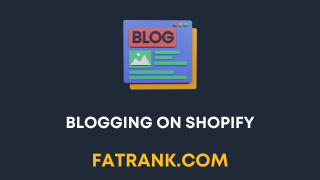
- Can you change the Shopify URL Structure?
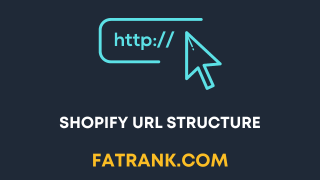
- Common Shopify SEO Issues
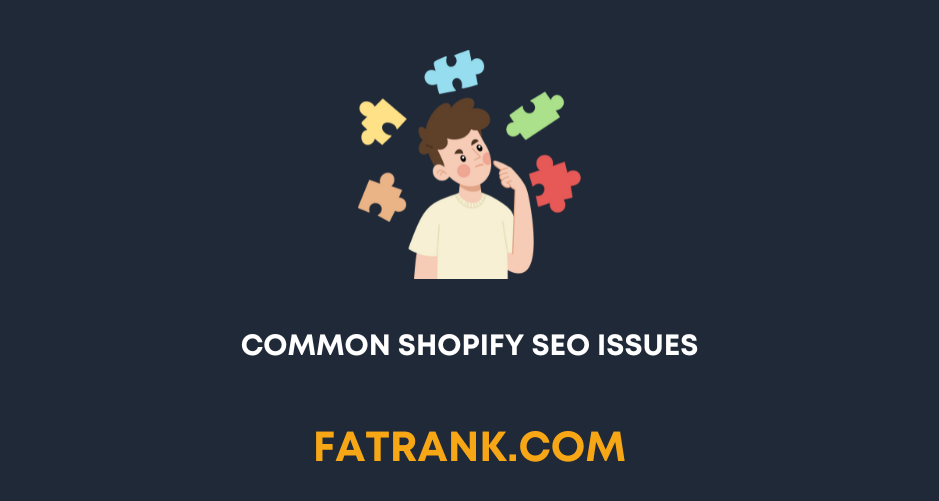
- Does Changing the Shopify Store Name Affect SEO
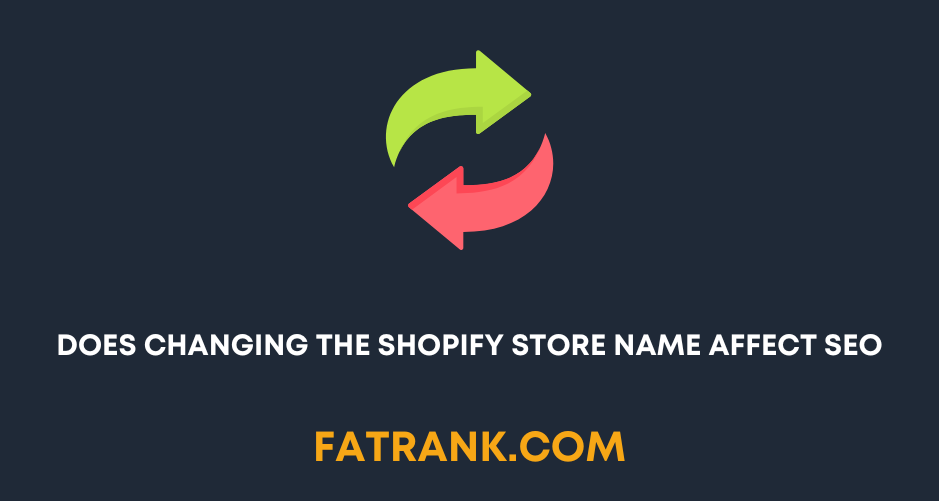
- Guide On Using Metafields In Shopify

- How Much Does Shopify SEO Cost

- How To Add Content To Shopify Collection Pages

- How To Add Keywords To Your Shopify Store For SEO
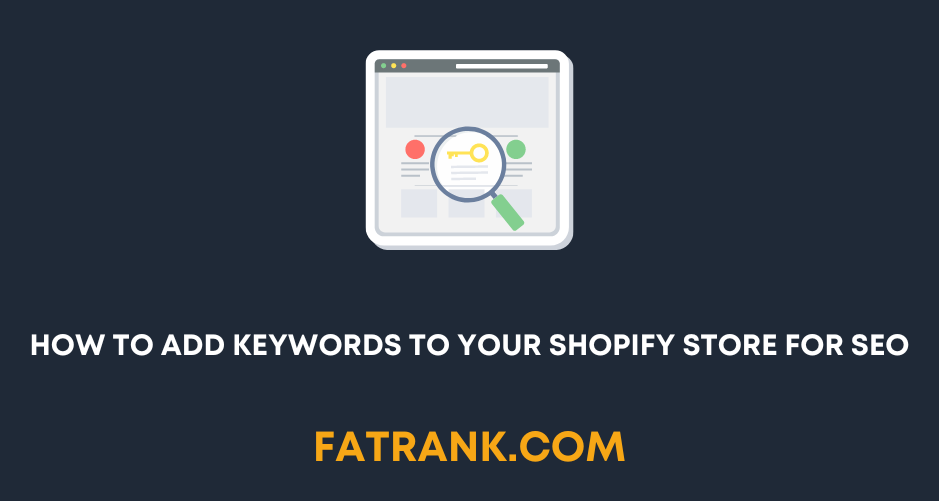
- How To Remove Duplicate Titles From Shopify Store
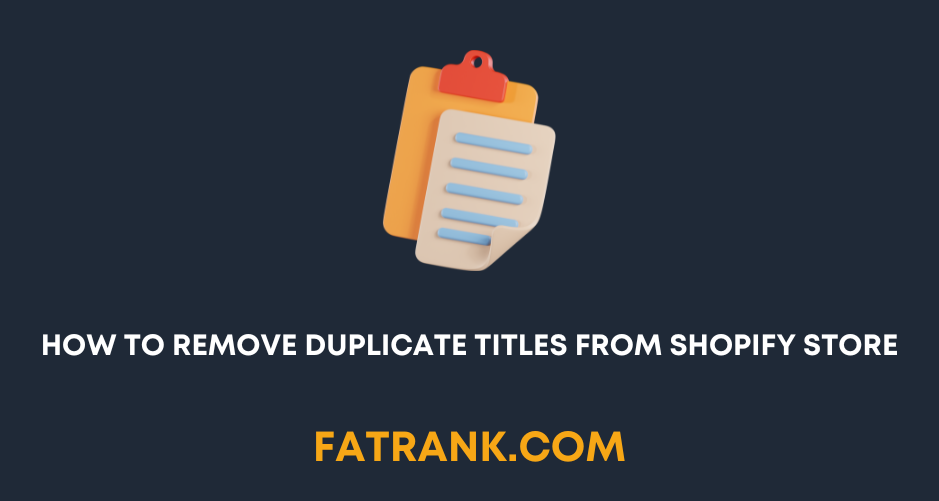
- How to Set up Multiple Shopify Stores Under One Domain

- Improving Search in Shopify Plus
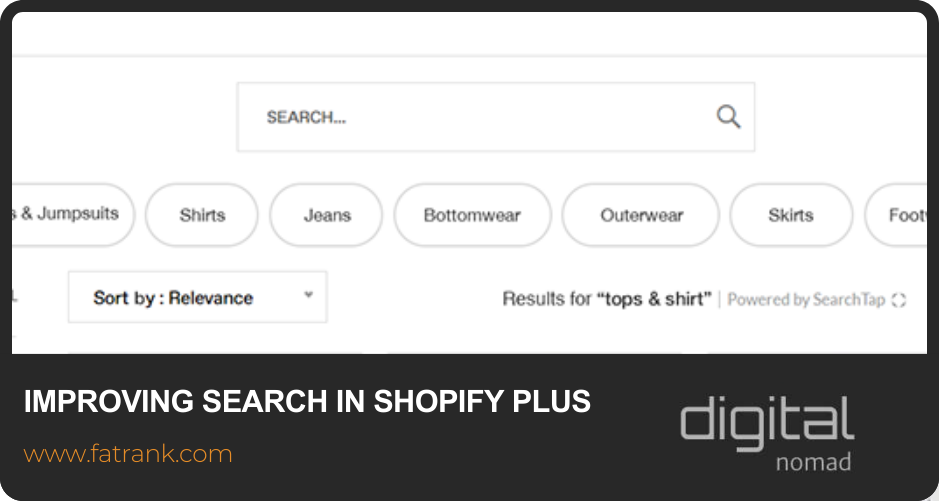
- Is Shopify bad for SEO? A Detailed Review
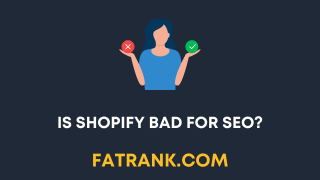
- Keyword Research for Shopify Stores
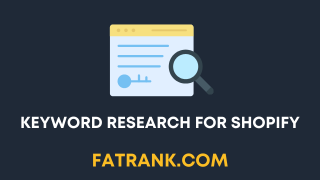
- Link Building for Shopify: Full Tutorial

- Shopify Breadcrumbs SEO Issues

- Shopify Collection Page SEO: The Definitive Guide
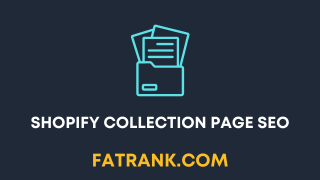
- Shopify Image Optimization: Speed & SEO Guide

- Shopify International: Multi-Currency & Multilingual Setup
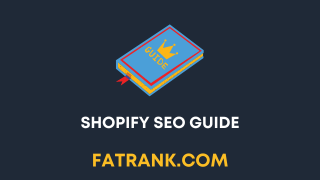
- Shopify On Page SEO Tutorial

- Shopify Plus SEO

- Shopify Plus SEO: Potential Limitations

- Shopify Product Tags SEO: Why It's Bad & How To Fix It

- Shopify Rich Snippets Tutorial: No App Needed

- Shopify SEO Agency

- Shopify SEO Case Study
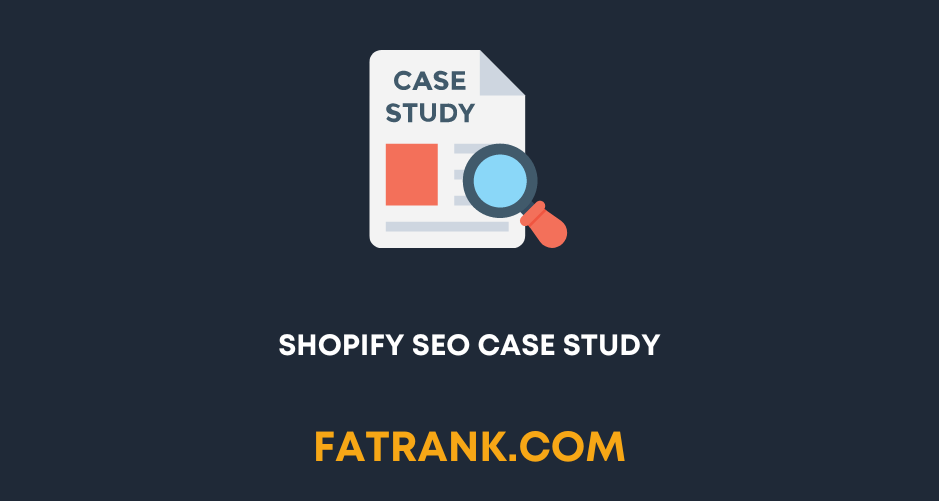
- Shopify SEO Checklist
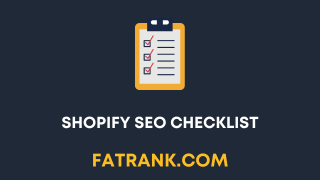
- Shopify SEO: The Definitive Guide

- Shopify Sitemap: Find & Submit Your XML Sitemap to Google

- Shopify Speed Optimization Guide
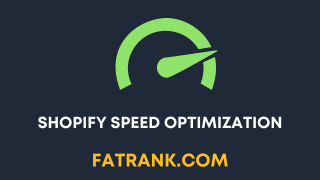
- Technical SEO for Shopify

- Why Is No One Buying From My Shopify Store
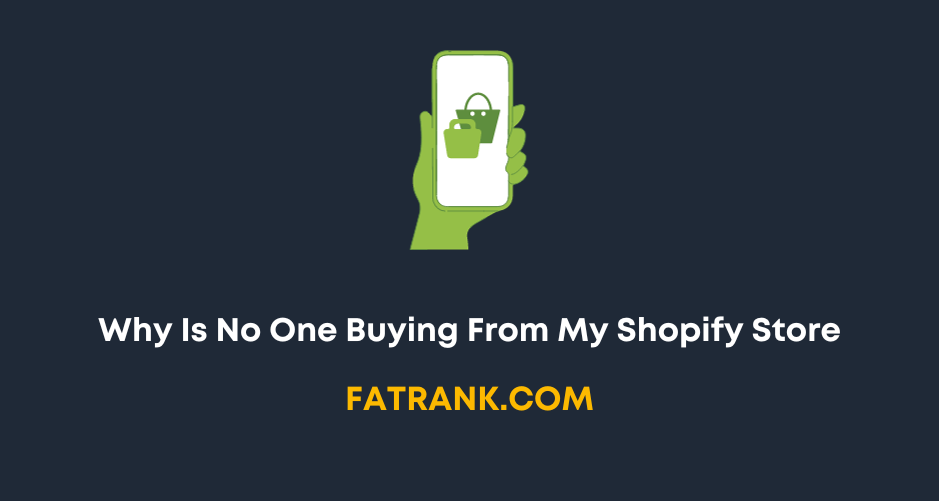
- Workarounds for the Shopify Variants Limit


About FatRank
Our aim to explain and educate from a basic level to an advanced on SEO and Social Media Marketing.
